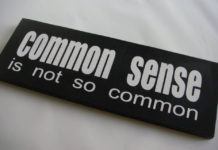From Self-Funding to Big Money Donors
No doubt that during election season there will be many aired advertisements on television and radio, and the closer we get to November, the more these ads will aim to discredit and attack the opposition.
This holds especially true in Florida, a very populated swing state, where politicians and their supporters spend tens of thousands of dollars to air their ads on television.
Just recently there were some anti-Trump ads running in the Sunshine State, claiming that Donald Trump is anti-woman. A pro-Hillary Clinton super PAC is hitting the Florida airwaves along with some other states, with ads that claim to define the Republican front-runner as being hostile towards women.
One of these particular ads displays several women, and one man, lip-syncing to some very colorful quotes made by the Donald himself. Some of these quotes may leave you feeling a little uncomfortable, and perhaps that is exactly what this super PAC intended. Ironically, the ad is similar to a spot ran in many states as well as nationally, on cable television, by a Republican anti-Trump super PAC.
Another ad that has been heavily circulated around Florida has been the allegations highlighting the lawsuit against Trump University, calling it a “phony scam”. The ad features a retiree by the name of Bob who says “I was duped by the Donald”, claiming to have paid $35,000 to Trump University and all he received was a cutout photo of Trump. Again, another ad taken from the anti-Trump GOP playbook and tailored to fit the Democrats narrative.
Meanwhile, Trump has not spent a great deal of money on his campaign, the self-funded billionaire has become a master of social media, spending most of his time and energy using Twitter and Facebook.
 Trump has backed away from committing that he would be self-funding in the general election. A definite signal that he is not self-funding himself in the fall came this week when he went to California, where he met with big dollar donors. The Great America PAC was created for Trump by California businessman, Eric Beach. He told The Hill this week “West Coast donors are following the trend like the rest of the country that’s seeing Republicans finally rally around Trump as their nominee.”
Trump has backed away from committing that he would be self-funding in the general election. A definite signal that he is not self-funding himself in the fall came this week when he went to California, where he met with big dollar donors. The Great America PAC was created for Trump by California businessman, Eric Beach. He told The Hill this week “West Coast donors are following the trend like the rest of the country that’s seeing Republicans finally rally around Trump as their nominee.”
Trump is well behind in his fundraising after mostly self-funding his primary campaign and telling donors he was so rich he didn’t need their money. That’s all changed now that Trump faces the prospect of a general election costing more than $1 billion. But he’s got a lot of catching up to do, and relationships to repair.
Trump has only in the last week finalized a joint fundraising account with the Republican National Committee and 11 state parties that allows individual donors to give nearly $500,000.
The GOP presumptive nominee still maintains that he doesn’t want money from lobbyists who he says will expect something in return. In an interview on CBS’s Face the Nation, the real estate mogul stated “Look, I know the people that want something. I’ve been doing this all my life. I’ve been a very big contributor to many, many people on all sides for many, many years”. It’s pretty clear that he doesn’t want lobbyists or any special interests.
But to say that Trump is self-funding his primary campaign might be a bit of a stretch. According to the data on Politifact, Trump’s campaign brought in about $19.4 million by the end of 2015. How much did Trump contribute himself? Nearly $13 million of that. Most of what remained came from individual contributions.
The majority of Trump’s contributions to his own campaign are actually loans rather than donations. What this could mean is that he can eventually recover these funds, about $10.8 million in loans.
Either way you look at it, there is a lot of money being spent for these political ads, whether funded by generous donations or whether they are being self-funded, the competition heats up and the runners in this presidential race will continue to try and show the American people why they deserve to be on 1600 Pennsylvania Avenue.













